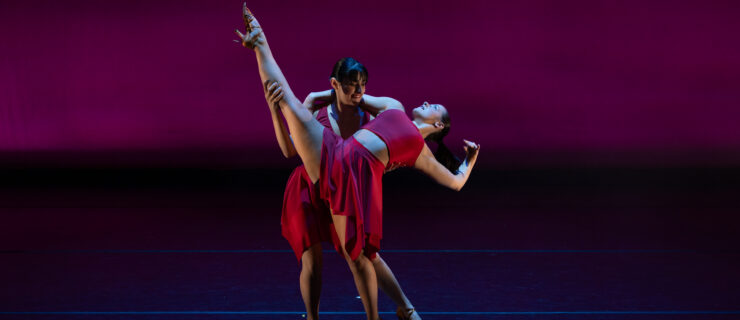Meet the Dancer Who's Redefining What it Means to be Disabled
In Rachid Ouramdane’s Tenir le temps, Annie Hanauer articulates the choreography with unforced precision, her natural demeanor and smooth transitions the perfect fit for Ouramdane’s undulating, abstract patterns. Few seem to notice that there is something slightly different about her: Hanauer was born missing part of her left arm, and now has a prosthetic one.
Hanauer, 30, has achieved what many thought impossible for a performer with a disability: a thriving career in the mainstream dance world. After performing with the UK’s Candoco Dance Company from 2008 to 2014, she is now an in-demand freelancer, and a tall, striking presence in the works of contemporary choreographers Emanuel Gat and Ouramdane.
Born in Minnesota, Hanauer started taking a range of classes at a local studio when she was 10. Both her family and dance teachers were supportive: “I was never excluded,” she says. “It was recreational, but when I got to the age of 16, I was taking class every night.”
Still, pursuing a college degree in dance was far from an easy decision. “I remember having a crisis when I was accepted, saying, ‘Am I ever going to get a job, because I’ve got one arm, you know?” she remembers dryly. The dance department at the University of Minnesota welcomed and nurtured her, and the curriculum helped widen her horizons. “I was the first person like this that they’d ever taught,” she says. “It was probably a challenge for them, but we got a lot of individual attention.”

In Rachid Ouramdane’s TORDRE. PC Patrick Imbert.
In college, she also learned to work around issues linked to her disability. Partnering proved especially complex, although improvisation helped in the long term. “My strategy was to just do it to the best of my abilities, like every other dancer,” she says.
The faculty prepared her for the challenges she would likely face in the industry: “I was ready to struggle through and have seven day-jobs,” she says. During her senior year, she spotted an audition notice for Candoco, which bills itself as a “company of disabled and nondisabled dancers.” They offered her a permanent contract, and the day after her graduation, Hanauer found herself moving to London.
The diverse repertoire of Candoco introduced Hanauer to European contemporary dance with creations by the likes of Hofesh Shechter, Rafael Bonachela and Nigel Charnock. The company was also invited to perform at the Beijing Olympics in 2008, and at the Paralympic Games in London in 2012.

In Rachid Ouramdane’s TORDRE. PC Patrick Imbert.
In 2014, Hanauer decided to “stretch her legs” and go freelance. “I wanted to keep growing as a dancer and to see how I would be received as a performer in a different context,” she says. Gat and Ouramdane, who had set works on Candoco, soon called, and she now regularly commutes between London, where she lives, and France, where both choreographers are based. Hanauer has been part of three creations with Ouramdane, including TORDRE, a “double portrait” tailor-made for her and another woman. In 2016, she appeared in Gat’s SUNNY, where her serene confidence and movement quality were highlights in the fluid group sections.
Prejudice is still part of Hanauer’s experience, however. Partners sometimes offer to change choreography before she’s had a chance to try it. “You have to be really in touch with your own body, and clear about what you need,” she says. Reactions to disabled performers have also frustrated her in the past. “People are surprised that I’m not clunky or awkward. The level of discourse about disability is not super-complex. Either it’s shocking, or a novelty, or else it’s ‘They’re so noble.’ ”
Hanauer knows her success story is fairly unusual, and believes inclusive companies are still relevant and necessary: “The dance world is still very restrictive. In the UK, there is more of a historical conversation about this because of Candoco and others, but there’s a lack of opportunities for dancers with disabilities.” She now teaches regularly, and is exploring work of her own with three dancers and support from Candoco and London’s The Place. “I still wonder if the industry is ready for me,” she says with a laugh. “You just have to keep going and try to change people’s minds by doing it.”




